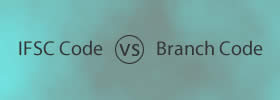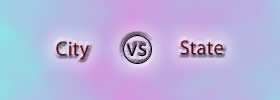Difference between Preschool and Primary School
Key Difference: Preschool is a preparatory school that has been designed for the children under the statutory school age. It generally covers children between two and five years of age. A primary school is an elementary school which is generally meant for children between the ages of five and eleven.
 A preschool refers to a type of educational institution where a child studies before commencing proper school. These institutions play a vital role as they provide an earlier start to education that forms the foundation for later years. Generally, preschools focus on play-based techniques of learning. Children tend to show more interest in these learning methodologies.
A preschool refers to a type of educational institution where a child studies before commencing proper school. These institutions play a vital role as they provide an earlier start to education that forms the foundation for later years. Generally, preschools focus on play-based techniques of learning. Children tend to show more interest in these learning methodologies.
Children at this tender age are very sensitive, thus properly trained staff is required to handle the students of a preschool. A preschool is effective in establishing interaction skills in the children. Children learn to share and interact with their classmates. Preschools also train the children in how to behave in a classroom environment.
 Primary school is basically an elementary school which usually consists of one to six grades (levels) of a school. Generally, it covers the children between the ages of five and eleven. After completing the primary education, the student moves on to a secondary school. The subjects in primary school generally include mathematics, social studies, physical education, health, etc.
Primary school is basically an elementary school which usually consists of one to six grades (levels) of a school. Generally, it covers the children between the ages of five and eleven. After completing the primary education, the student moves on to a secondary school. The subjects in primary school generally include mathematics, social studies, physical education, health, etc.
A lot of emphasis is laid to improve the reading ability of a child. In most of the countries, primary education is compulsory for the children. Students study a range of subjects in a primary school. They also develop knowledge skills. A lot of emphasis is made on the moral values, as this stage of a child contributes effectively in the character development of a child.
Comparison between Preschool and Primary School:
|
|
Preschool |
Primary School |
|
Definition |
Denotes any type of institution that has been designed for children who are too young to go to a school. |
Denotes an elementary school which includes the first three or four grades of a school. |
|
Types |
Some of the types are -
|
|
|
Origin |
From Latin prae-, prefixal meaning first, fore, prior, pro + Old English scol, from Latin schola "intermission of work, leisure for learning; learned conversation, debate; lecture; meeting place for teachers and students, place of instruction; disciples of a teacher, body of followers, sect" |
From Latin primarius "of the first rank, chief, principal, excellent" + Old English scol, from Latin schola "intermission of work, leisure for learning; learned conversation, debate; lecture; meeting place for teachers and students, place of instruction; disciples of a teacher, body of followers, sect" |
|
Advantages |
|
|
|
Type of classes |
Generally, half day |
Generally, full day |
|
Subjects covered |
Generally, includes Reading and Language Arts, Basics of Math, Social Studies, Science, Health, Physical Education, Art, Music and Environmental Education. |
Generally, includes Language, Mathematics, Social studies, Physical Education, Health and Science. |
Image Courtesy: conyerselc.org, theguardian.com









Comments
CambridgeMontessori
Thu, 11/02/2017 - 11:18
Add new comment